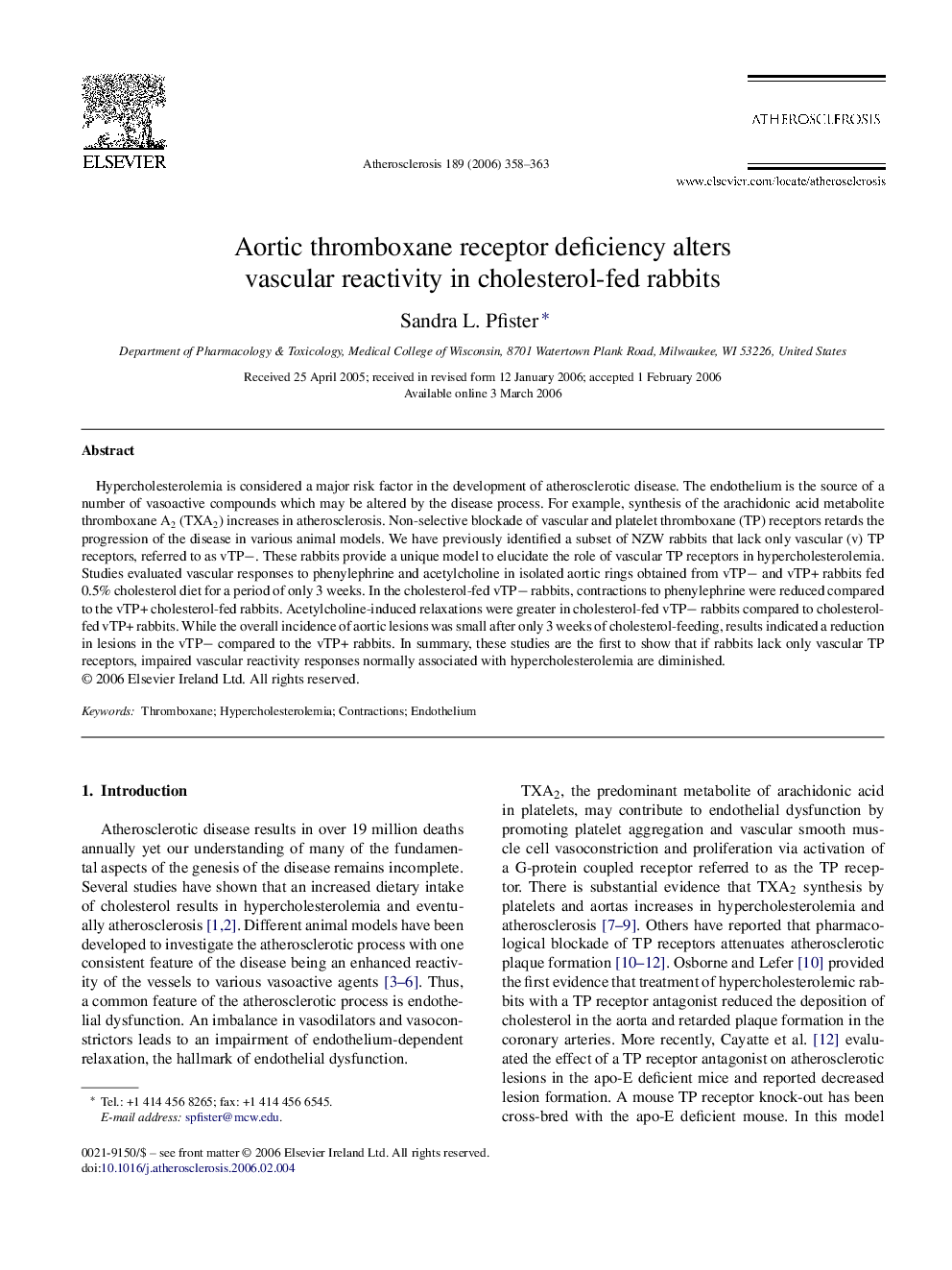| Article ID | Journal | Published Year | Pages | File Type |
|---|---|---|---|---|
| 2894998 | Atherosclerosis | 2006 | 6 Pages |
Abstract
Hypercholesterolemia is considered a major risk factor in the development of atherosclerotic disease. The endothelium is the source of a number of vasoactive compounds which may be altered by the disease process. For example, synthesis of the arachidonic acid metabolite thromboxane A2 (TXA2) increases in atherosclerosis. Non-selective blockade of vascular and platelet thromboxane (TP) receptors retards the progression of the disease in various animal models. We have previously identified a subset of NZW rabbits that lack only vascular (v) TP receptors, referred to as vTPâ. These rabbits provide a unique model to elucidate the role of vascular TP receptors in hypercholesterolemia. Studies evaluated vascular responses to phenylephrine and acetylcholine in isolated aortic rings obtained from vTPâ and vTP+ rabbits fed 0.5% cholesterol diet for a period of only 3 weeks. In the cholesterol-fed vTPâ rabbits, contractions to phenylephrine were reduced compared to the vTP+ cholesterol-fed rabbits. Acetylcholine-induced relaxations were greater in cholesterol-fed vTPâ rabbits compared to cholesterol-fed vTP+ rabbits. While the overall incidence of aortic lesions was small after only 3 weeks of cholesterol-feeding, results indicated a reduction in lesions in the vTPâ compared to the vTP+ rabbits. In summary, these studies are the first to show that if rabbits lack only vascular TP receptors, impaired vascular reactivity responses normally associated with hypercholesterolemia are diminished.
Related Topics
Health Sciences
Medicine and Dentistry
Cardiology and Cardiovascular Medicine
Authors
Sandra L. Pfister,
